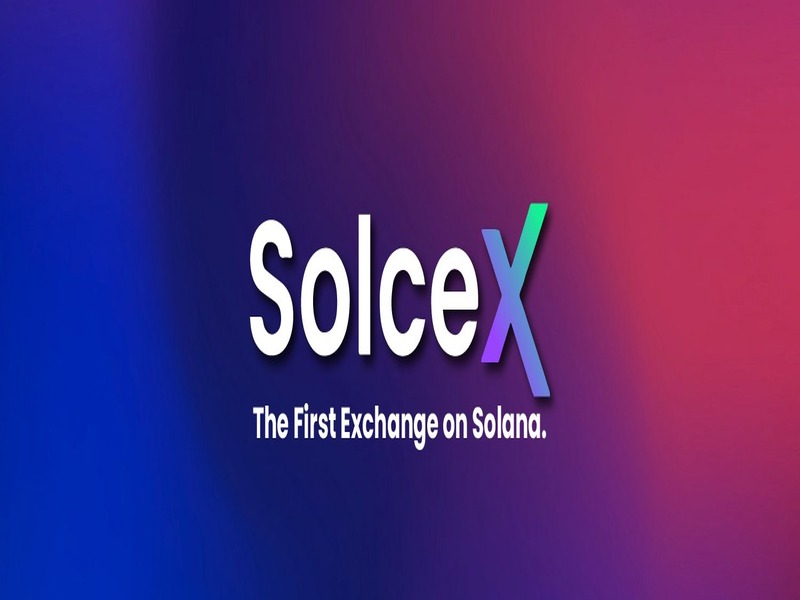Bitcoin standard is released


introduction
The transition from a fiat standard to a Bitcoin standard is highly desirable, but not inevitable or necessarily imminent. The timing and occurrence of these changes will depend on the adoption choices made by individuals, organizations, and public authorities. These decisions are influenced by emotional and irrational factors (greed and fear, among others) as well as rational considerations. The collective will of a critical mass of people with sufficient capital and institutions will play a critical role in replacing central banks and entrenched power structures in favor of a new system centered around Bitcoin. Despite Bitcoin’s technological, economic, and ethical superiority over other forms of money, this struggle will undoubtedly have devastating consequences, and the results are not guaranteed.
Nonetheless, it is important to consider the consequences that this potential revolution, if realized (as we all hope it will), could have on all aspects of social existence. These implications range from the nature of states and international relations to the functioning of economic systems, dominant value systems, and even energy markets and technological innovation. In this article, without pretending to be exhaustive, we aim to briefly explore some of these aspects and suggest plausible trajectories.
Bitcoin and Fractional Reserve Banking
As Hal Finney accurately predicted, a hypothetical Bitcoin standard would be incompatible with central banks, but not necessarily with a fractional reserve banking system. Algorithmic limitations on the number of transactions per block clearly prevent Layer 1 from being used as a retail payment system. Over time, the number of transactions taking place will decrease and this will have a very high value (in reality, only whales or large public and private institutions can afford this, considering the high costs).
Some form of free banking 2.0 at Layer 2 will be inevitable in the medium to long term for a Bitcoin-based monetary system. Without a central bank as a lender of last resort, and with reserves much easier to verify than gold, these layer 2/layer 3 fractional reserve banks (FRBs) would be much more vulnerable than the current fractional reserve system supported by legal tender. , central banks, no real distinction between the monetary base and the money supply is possible. This only reinforces the importance of Layer 1 as a solid foundation for the monetary system, similar to the role gold has played over the past millennia.
Macroeconomic Impact
Ceteris Paribus believes that in the medium term, adoption of a hypothetical Bitcoin standard would significantly smooth out economic cycle fluctuations, preventing private sector overindebtedness, malinvestment, and credit bubbles that would otherwise lead to a systemic debt crisis. Monetary repression will also make the real growth rate of the economy much slower but steady over the medium to long term. Without the engine of money and credit expansion, i.e. inflationary policies from central banks, nominal output growth would be minimal within Bitcoin standards, but real growth would remain significant. In other words, an increase in multifactor productivity causes consumer prices measured in satoshis to fall rather than increase nominal output. In this context, even in the short term, economic growth will depend on demographic, ecological and economic factors rather than monetary or credit factors.
In this regard, with the Bitcoin standard, there will be a gradual transfer of wealth from today’s greedy financial sector to the real and productive economy. This is the result of a significant downsizing of the bond and money markets (reducing the level of debt in the economy) and the entire industry benefiting from this.
Among the companies that are shrinking the most are centralized payment and clearing systems, traditional credit institutions, custodial agents such as notaries (replaced by smart contracts in Bitcoin Layers 2 and 3), and companies involved in finance, real estate, and insurance. mediation.
Conversely, anything that leverages the Bitcoin layer (for smart contracts) and the potential of DeFi will experience a real boom.
(geographic) political meaning
With regard to the immutability of the monetary base, the country will be subject to strict fiscal discipline, as the option of monetizing deficits or debt as a form of financing public expenditure will disappear. This will have serious implications for the ability of nation-states to provide welfare or wage war. Without the money printing press, the insidious taxes of inflation, fiscal pressures and public spending allocations would be subject to serious negotiations and political debates as they directly impact the pockets of citizens/subjects/taxpayers. .
On the one hand, this could encourage more direct forms of democracy (facilitated by the proliferation of blockchains and DAOs), giving citizens a greater say in tax and spending decisions. On the other hand, a world based on the Bitcoin standard could lead to a much more fragmented and bipolar geopolitical environment, more akin to classic medieval feudalism and given the inherent unsustainability of maintaining large and inefficient state apparatuses. Instead of sword/blood/robe aristocrats, Bitcoin whales will become the dominant social class, and non-coin users will become a kind of new serfdom. Electronics, individuals, families and institutions with huge Bitcoin holdings (generated in the early stages of adoption of this technology, i.e. in the first 20 years of its existence) can provide welfare, jobs and protection to their citizens. Subjects in return for loyalty, service, and submission to “feudal” rule. The latter, our ancestors, arrived too late to adopt and convert fiat capital to Bitcoin (for various ideological or practical reasons, including economic constraints), and the majority of the population would be at the bottom of the pyramid and forced to make a living by the sweat of their brow. either sustaining it or (perhaps given technological advancements) making a living through the generosity (more or less interest) of charity whales. This dynamic will also apply internationally. This means that there will be pioneering regions or countries that adopt Bitcoin as fiat currency first, and will enjoy a significant relative wealth advantage that will be difficult for latecomers to catch up to.
These are not necessarily the currently dominant countries. In fact, some may not even exist today. The ultimate result will be an international system that is far more fragmented than our current system, with a mix of democratic, socialist or oligarchic city-states, secret aristocratic fiefdoms centered around individual families, and large-scale anarchic and chaotic regions. All of these actors will compete/cooperate with each other to form an entirely new and ever-evolving geopolitical-ideological landscape. In a world where old identity affiliations (national, ideological, religious) overlap and blend with new identities, depending on the interpretation of the Bitcoin revolution. Given the technical assumptions and ideological foundations of Bitcoin culture, a “co-monastic” religion could emerge linked to certain ritual and faith-based aspects (the concept of perfection, decentralization, Satoshi worship, algorithmic infallibility) that can already be glimpsed among its staunch adherents. there is. In any case, the Bitcoin standard will impose on the societies that adopt it some economic norms that closely impact public morality. Among them are a sense of limits, an ethic of savings, prudent investment, long-termism, honesty in commercial transactions, personal responsibility, fiscal discipline and, of course, independence and incorruptibility of money from state power.
Nodes, mining and geopolitics
Because nodes are the core of the Bitcoin network, they receive significant attention from political forces. It is crucial for public authorities to control all nodes (and potential miners) within a given territory in order to assert sovereignty internally and influence the international scene. Naturally, when other variables are taken into account, countries that can produce energy at lower costs or on a larger scale will have an advantage in allocating and controlling a significant portion of the global Bitcoin hashrate. The eternal struggle to control global hashrate will become the new center of geoeconomic conflict. That said, there is no guarantee that most territorial political entities will be able to exercise this control effectively, and it is unclear how they will do so.
Legal physical coercion may seem like an obvious choice, but given the special nature of the state, it may not necessarily be the most successful approach in a more fragmented and competitive geopolitical environment than we currently have. Bitcoin’s high mobility and the financial constraints imposed on traditional countries by this monetary system make it easy for both miners and whales to move elsewhere, seeking refuge in more liberal jurisdictions if their property rights and entrepreneurial freedoms are at risk. You can move it. On the other hand, a different scenario may unfold for a new ‘neo-aristocratic’ state entity built around one or more whales. In this case, monopolies over mining and necessary energy resources may become more pronounced, given the enormous economic power held by the governing body.
Energy Market Impact
Bitcoin is an energy currency, not a commodity currency. The force it encapsulates is the energy expended to create and transmit it. Energy, the lifeblood of the new monetary paradigm, will therefore become more central to the economic system than it is today. This will fundamentally inform the development of the energy sector and create competition for technological innovations both in terms of extraction and energy conservation. A whole range of energy sources previously dismissed as uneconomical have now become convenient and accessible for use in mining. Think of some systems based on the sun in African and Asian deserts, methane and natural gas deposits in remote areas, geothermal energy from volcanoes and geysers, or even wave motion and temperature differences deep in the ocean.
As the demand for energy continues to grow, the incentives to produce more energy and produce it more efficiently will grow, which could lead to a major energy revolution, potentially bringing humanity closer to a level 2 civilization on the Kardashev scale. , certainly contributing to electrifying the planet, even in the most remote places. Another possible outcome of the Bitcoin standard is a change in the roles between energy producers and consumers. The largest energy consumers (mining farms) will over time become major energy producers in the vertical integration of their assets and energy infrastructure, which will assimilate the entire energy industry starting from the bottom. Whether this will lead to greater or less centralization and decentralization of energy producers is yet to be seen, but this will certainly depend on the commercial dynamics of the mining industry.
This is a guest post by Michele Uberti. The opinions expressed are solely personal and do not necessarily reflect the opinions of BTC Inc or Bitcoin Magazine.


